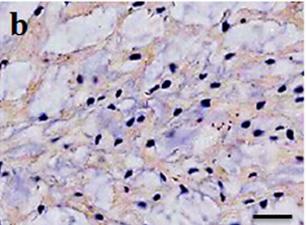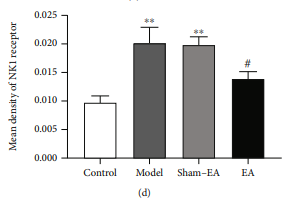NK1R Antibody - #DF7405
製品説明
*The optimal dilutions should be determined by the end user. For optimal experimental results, antibody reuse is not recommended.
*Tips:
WB: For western blot detection of denatured protein samples. IHC: For immunohistochemical detection of paraffin sections (IHC-p) or frozen sections (IHC-f) of tissue samples. IF/ICC: For immunofluorescence detection of cell samples. ELISA(peptide): For ELISA detection of antigenic peptide.
引用形式: Affinity Biosciences Cat# DF7405, RRID:AB_2839343.
折りたたみ/展開
Neurokinin 1 receptor; NK 1 receptor; NK 1R; NK-1 receptor; NK-1R; NK1 receptor; NK1R; NK1R_HUMAN; NKIR; SPR; Substance P receptor; Substance-P receptor; TAC 1R; TAC1R; Tachykinin 1 receptor (substance P receptor neurokinin 1 receptor); Tachykinin receptor 1 (substance P receptor neurokinin 1 receptor); Tachykinin receptor 1; TACR1;
免疫原
A synthesized peptide derived from human TACR1, corresponding to a region within the internal amino acids.
- P25103 NK1R_HUMAN:
- Protein BLAST With
- NCBI/
- ExPASy/
- Uniprot
MDNVLPVDSDLSPNISTNTSEPNQFVQPAWQIVLWAAAYTVIVVTSVVGNVVVMWIILAHKRMRTVTNYFLVNLAFAEASMAAFNTVVNFTYAVHNEWYYGLFYCKFHNFFPIAAVFASIYSMTAVAFDRYMAIIHPLQPRLSATATKVVICVIWVLALLLAFPQGYYSTTETMPSRVVCMIEWPEHPNKIYEKVYHICVTVLIYFLPLLVIGYAYTVVGITLWASEIPGDSSDRYHEQVSAKRKVVKMMIVVVCTFAICWLPFHIFFLLPYINPDLYLKKFIQQVYLAIMWLAMSSTMYNPIIYCCLNDRFRLGFKHAFRCCPFISAGDYEGLEMKSTRYLQTQGSVYKVSRLETTISTVVGAHEEEPEDGPKATPSSLDLTSNCSSRSDSKTMTESFSFSSNVLS
種類予測
Score>80(red) has high confidence and is suggested to be used for WB detection. *The prediction model is mainly based on the alignment of immunogen sequences, the results are for reference only, not as the basis of quality assurance.
High(score>80) Medium(80>score>50) Low(score<50) No confidence
研究背景
This is a receptor for the tachykinin neuropeptide substance P. It is probably associated with G proteins that activate a phosphatidylinositol-calcium second messenger system. The rank order of affinity of this receptor to tachykinins is: substance P > substance K > neuromedin-K.
Cell membrane>Multi-pass membrane protein.
Belongs to the G-protein coupled receptor 1 family.
研究領域
· Environmental Information Processing > Signal transduction > Calcium signaling pathway. (View pathway)
· Environmental Information Processing > Signaling molecules and interaction > Neuroactive ligand-receptor interaction.
· Human Diseases > Infectious diseases: Viral > Measles.
参考文献
Application: IHC Species: mouse Sample: NP cells
Application: ELISA Species: Rat Sample: colon tissues
Restrictive clause
Affinity Biosciences tests all products strictly. Citations are provided as a resource for additional applications that have not been validated by Affinity Biosciences. Please choose the appropriate format for each application and consult Materials and Methods sections for additional details about the use of any product in these publications.
For Research Use Only.
Not for use in diagnostic or therapeutic procedures. Not for resale. Not for distribution without written consent. Affinity Biosciences will not be held responsible for patent infringement or other violations that may occur with the use of our products. Affinity Biosciences, Affinity Biosciences Logo and all other trademarks are the property of Affinity Biosciences LTD.


